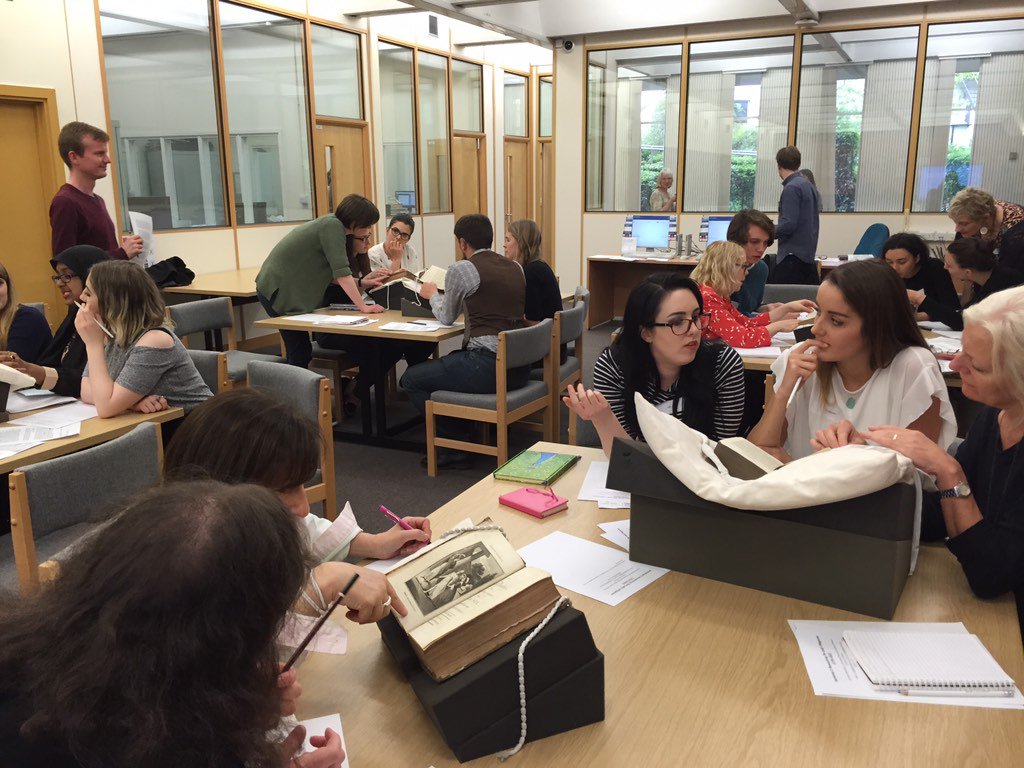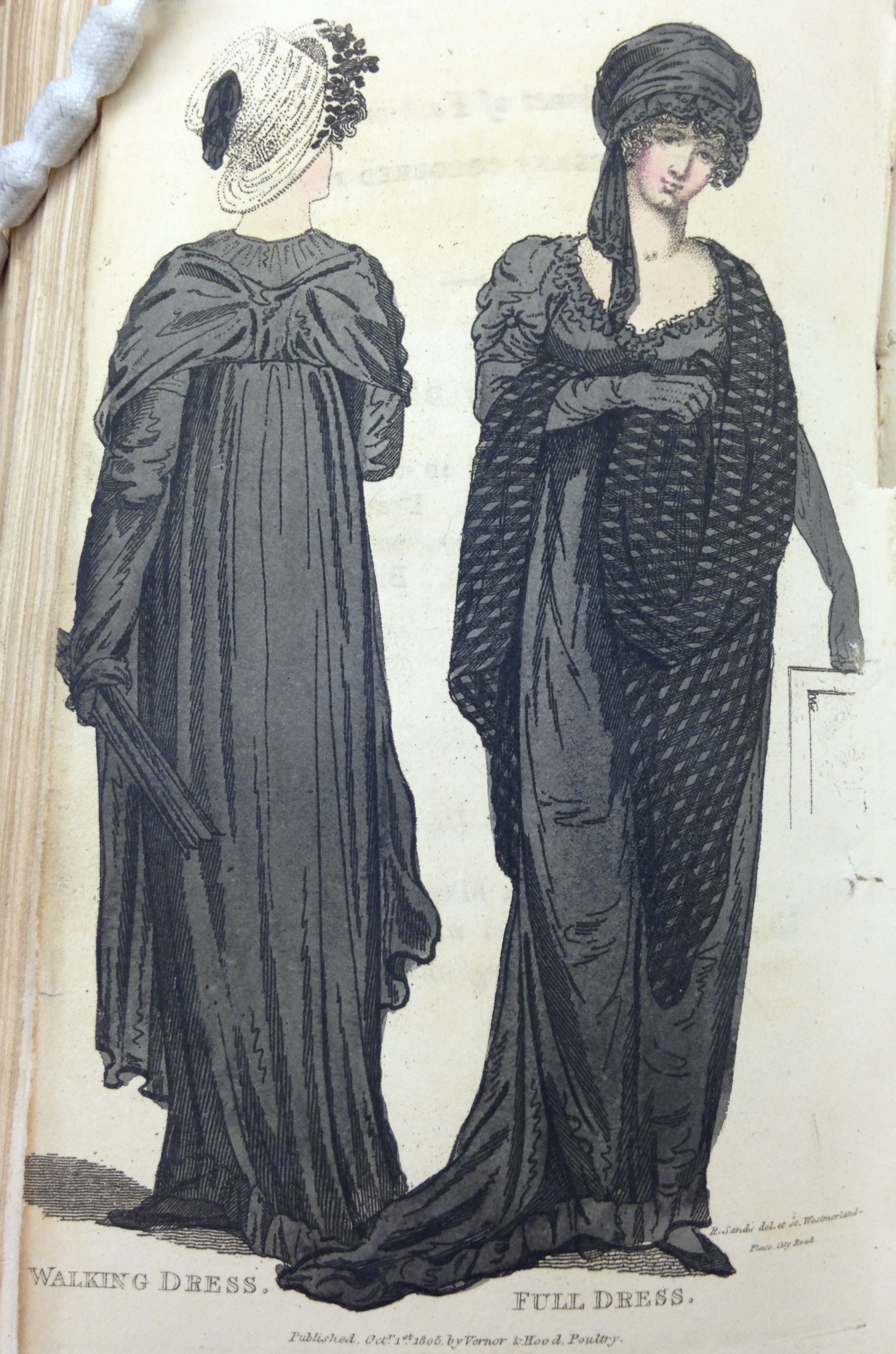 This week the Lady’s Magazine team travelled to the first annual CRECS conference at Cardiff University, where we were invited by Anthony Mandal, Sophie Coulombeau and James Castell to deliver a workshop on researching the periodical. Cardiff University’s Special Collections and Archives (SCOLAR) was particularly suited to our delivery of a hands-on workshop as the library has an impressive run of the Lady’s Magazine. Attendees, including undergraduates, postgraduates and academics focusing on eighteenth-century studies were able to examine copies of the magazine to explore questions we posed regarding the periodical’s audience, content and form.
This week the Lady’s Magazine team travelled to the first annual CRECS conference at Cardiff University, where we were invited by Anthony Mandal, Sophie Coulombeau and James Castell to deliver a workshop on researching the periodical. Cardiff University’s Special Collections and Archives (SCOLAR) was particularly suited to our delivery of a hands-on workshop as the library has an impressive run of the Lady’s Magazine. Attendees, including undergraduates, postgraduates and academics focusing on eighteenth-century studies were able to examine copies of the magazine to explore questions we posed regarding the periodical’s audience, content and form.
Koenraad, Jennie and I asked the audience to look at the volumes in groups of six to ten – each table was able to have two copies of the magazine so everyone was able to look at, touch and search through two different years in the magazine’s history. They then reported back to us with their assumptions about who the magazine was marketed to and designed for, using evidence from the physical copies to support their responses.
As researchers on the Lady’s Magazine, hearing the audience responses about the publication’s intended audience was particularly interesting in that it allows us to consider how we might modify the ways in which we present our work on the magazine. Overcoming assumptions about exactly what the periodical was, and who read and wrote for it, must be an essential part of our discussion of the periodical. It is too easy to take for granted the evidence the magazine itself offers in its full title Lady’s Magazine; or Entertaining Companion for the Fair Sex, Appropriated Solely to Their Use and Amusement and to thus overlook the diversity of not only its readership and authors, but also the scope of its content.
Our audience was then given different topics; we asked them to consider how the magazine presents fashion, celebrity, masculinity and the news. One of the best parts of the workshop was going between the different tables and seeing how excited the attendees were when engaging with the material artifact.  They noted the size of the volumes and print, the quality of the engravings, and often went directly to the magazine’s index at the end of each yearly bound volume to try and get an idea of the contents. But as attendees soon discovered for themselves, the magazine’s own index is of limited usefulness in determining exactly the content, genre or even subject of a particular item. They questioned whether or not the presentation of a topic in a specific item could be used to make assumptions about the magazine’s politics, discussed the appearance of a topic in different genres, debated the changes in the division of the news section and did a brilliant job grasping quickly the subtleties and scope of the periodical.
They noted the size of the volumes and print, the quality of the engravings, and often went directly to the magazine’s index at the end of each yearly bound volume to try and get an idea of the contents. But as attendees soon discovered for themselves, the magazine’s own index is of limited usefulness in determining exactly the content, genre or even subject of a particular item. They questioned whether or not the presentation of a topic in a specific item could be used to make assumptions about the magazine’s politics, discussed the appearance of a topic in different genres, debated the changes in the division of the news section and did a brilliant job grasping quickly the subtleties and scope of the periodical.
The day after the conference we returned to SCOLAR to take advantage of the library’s holdings – Jennie and Koenraad were interested in the copies of the Lady’s Magazine that included advertisements –  very rare indeed – and patterns and engravings that have been removed from most other available volumes. (Koenraad’s blog post next week will be focusing on his work on these advertisements and the insights they offer into the magazine). I was keen to look at the volumes of one of the Lady’s Magazine’s imitators and competitors, the Lady’s Monthly Museum; Or, Polite Repository of Amusement and Instruction (1798 – 1832). The copies I examined were incredibly useful to my research on the fictional content of the Lady’s Magazine, but what I also appreciated about the volumes of the Lady’s Monthly Museum were its many beautiful fashion plates.
very rare indeed – and patterns and engravings that have been removed from most other available volumes. (Koenraad’s blog post next week will be focusing on his work on these advertisements and the insights they offer into the magazine). I was keen to look at the volumes of one of the Lady’s Magazine’s imitators and competitors, the Lady’s Monthly Museum; Or, Polite Repository of Amusement and Instruction (1798 – 1832). The copies I examined were incredibly useful to my research on the fictional content of the Lady’s Magazine, but what I also appreciated about the volumes of the Lady’s Monthly Museum were its many beautiful fashion plates.
This was our second visit to Cardiff as a project team after presenting a panel last summer at BARS, and again we had a wonderful time at the University, discussing our work to a receptive and engaged audience and learning much from their responses to the magazine and our project.
